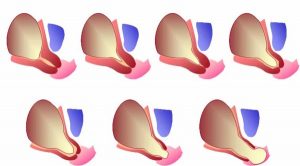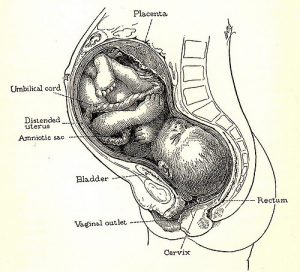One of the greatest fears for pregnant women is preterm labor. It can happen for several reasons, but the main reason that speeds up a spontaneous and early birth is cervical incompetence1.
What is a Protruding Sac
Women who tend to have a cervix more sensitive to the weight of pregnancy, or for some reason do not remain closed during the course of pregnancy, may experience the condition of a protruding sac. During pregnancy, the uterus grows and consequently, the weight it exerts on the cervix increases. To understand exactly, just look at this figure:

Uterus Size
The uterus normally has the size of a woman’s closed fist. About 40 to 50cm³, and it expands during pregnancy. It can reach up to 45cm in height during the 9th month of pregnancy.
Think of the uterus as an extremely flexible and expandable muscle2. There are women who have carried up to 8 babies! Although human nature was designed to carry one baby at a time, it is possible for a twin pregnancy to go ahead successfully, up to the 9th month.
The uterus is one of the most perfect organs nature has provided, but like all other organs, it has its weak points. The weight of the baby, the amniotic fluid, and the placenta on the cervix can be enough to cause a fairly common occurrence: the protruding sac.
What is the protruding sac? The baby is surrounded by a thin membrane that contains the amniotic fluid to protect the baby from impacts during pregnancy. Even if the pregnant woman has intercourse, falls, or some unexpected bump in the abdominal region, she can count on this protection for the baby. The problem occurs when this sac becomes visible through the cervix, that is, with the weight of pregnancy, the cervix ends up getting shorter and this allows for dilation that causes part of the sac to protrude outside of where it should be, inside the uterus.
Sign of Premature Labor?
This is when the doctor responsible for the pregnancy becomes alarmed. The protruding sac can be a sign that preterm labor is close, and the woman risks having her water break at any moment.
The diagnosis of a protruding sac is made in two ways, by manual examination and also by ultrasound. With ultrasound, it’s possible to measure the length of the cervix and see if any part of the sac is protruding through a possible opening. By manual examination, the doctor can feel for dilation and also check the thickness of the cervix.
How to Prevent Premature Labor Due to a Protruding Sac?
When there is a threat of preterm labor along with dilation and shortening of the cervix (effaced cervix), the doctor may consider containing the sac with a procedure called cerclage3. This is a set of stitches placed to prevent the cervix from opening further and the sac from rupturing, which would bring forward the birth of the baby or babies.
It is possible for a woman not to go into labor and still have a protruding sac, so any sign your body gives you that feels different, it’s important to go immediately to the doctor or maternity hospital.
Cerclage
Cerclage can be performed from the 12th week of pregnancy and at any time after this date. The indications for cerclage or any other procedure to prevent preterm labor should be made under absolute and strict medical assessment as it is an invasive procedure; however, in some cases, it is extremely important to provide the baby with a few more weeks to gain weight and develop properly until he or she can be born safely and breathe unaided. Not sure? Talk to your obstetrician as soon as possible!
See also: A Loss, A Triumph – Cerclage and Bed Rest – Daniela












